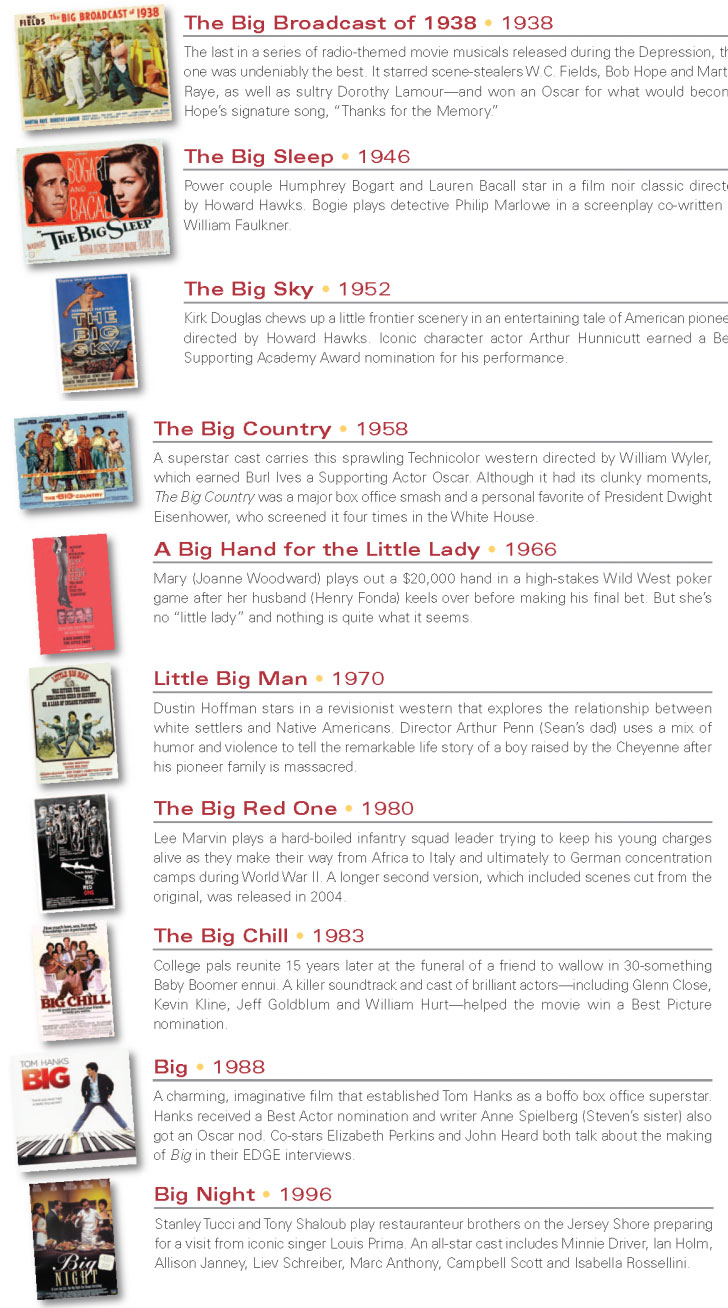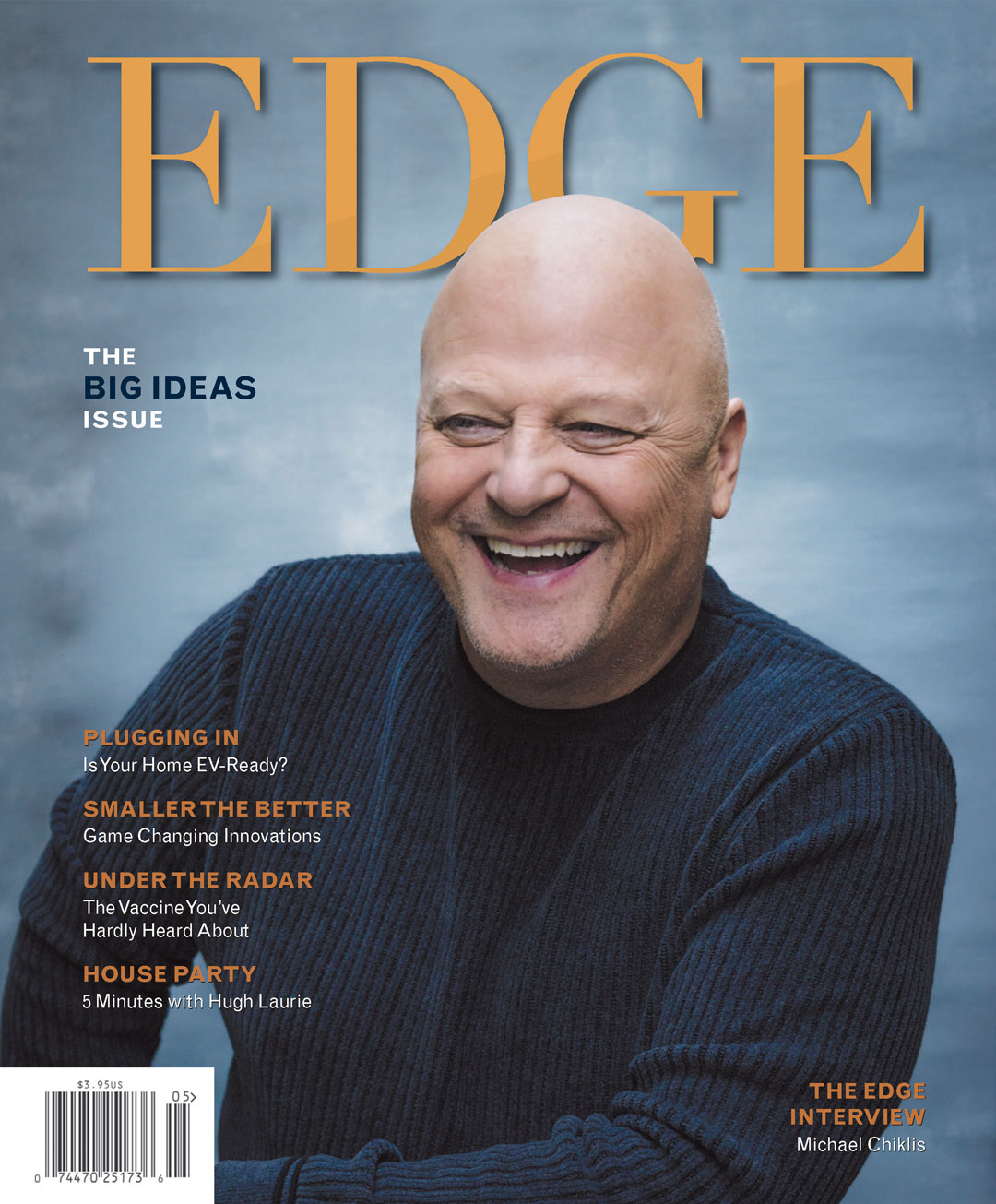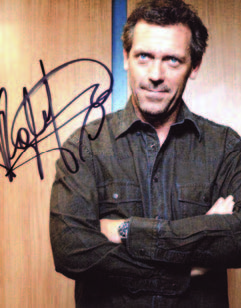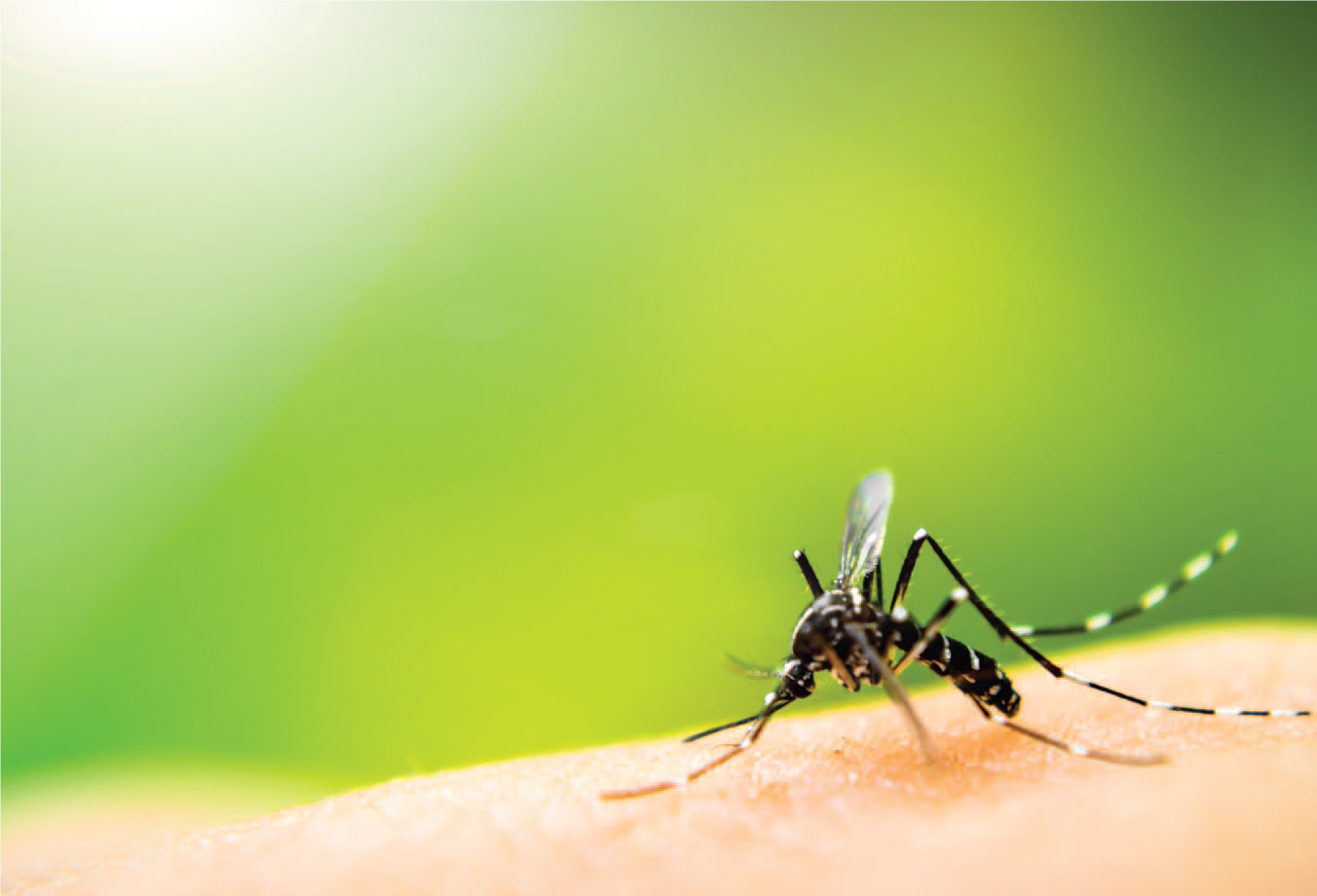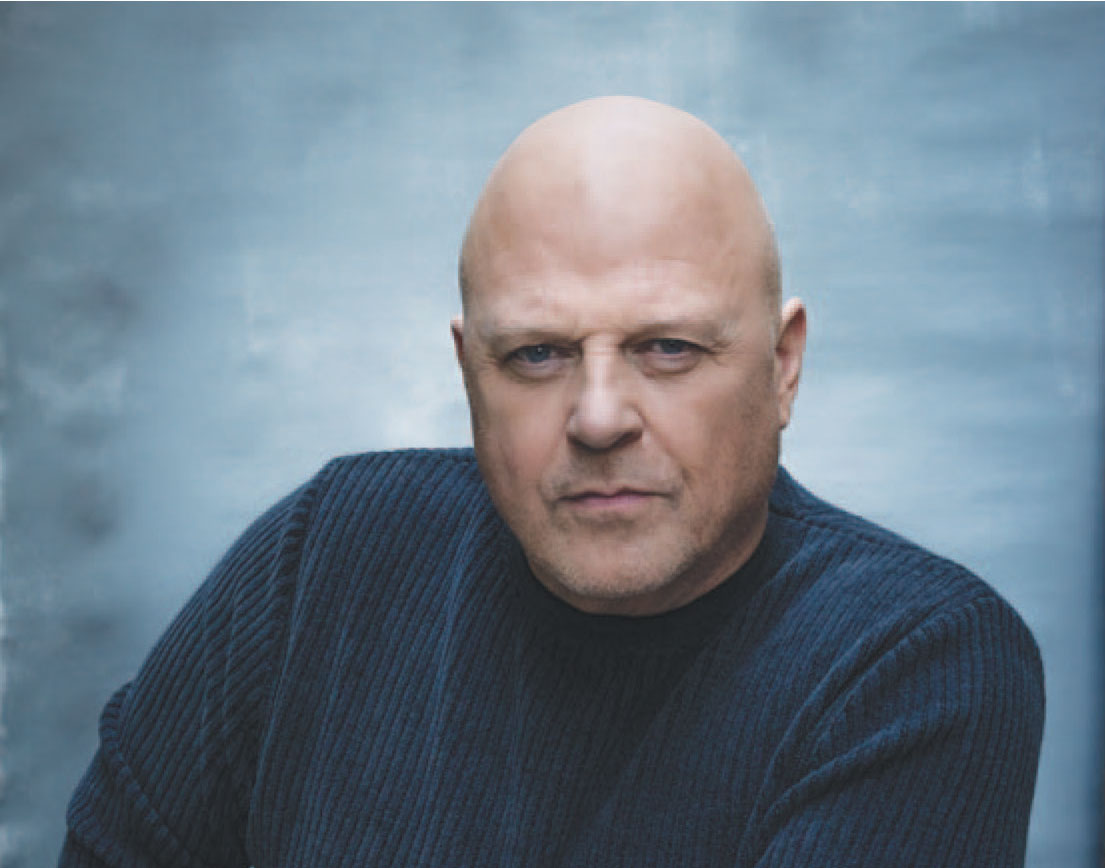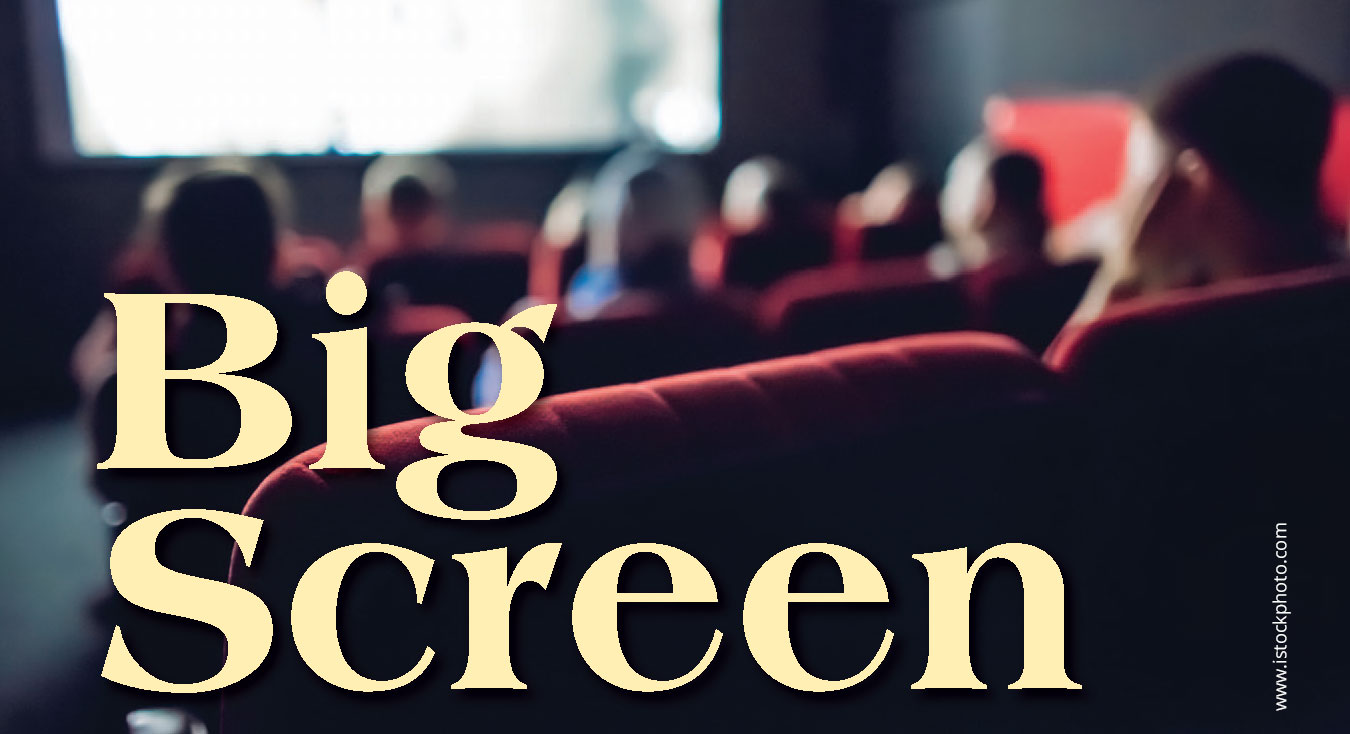5 Minutes with…
Actor/Director Hugh Laurie
You have directed before, on House and other projects. Coming off of [Agatha Christie’s] Why Didn’t They Ask Evans? how do you assess yourself as a director at this point?
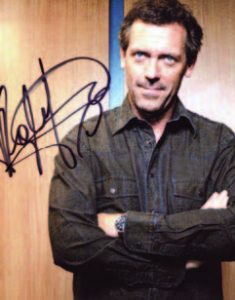
Upper Case Editorial
I’m not as calm as I would like to be [laughs]. I tended to become more agitated than I would have liked to have been. I think the problem is that any job you do in life is only difficult or easy in relation to how much you care about the outcome. Brain surgery is pretty easy…if you don’t mind the patient dying. But if you care a lot about something, things could be almost infinitely difficult or infinitely problematic, I should say. There will always be things that you wish—if only it could be this instead of that—and I confess that I was at times not as level-headed as I wish I could have been.
What are the most important qualities you need to be an actor, and what are the most important qualities you need to be a director?
Wow. I suspect the list of qualities you need to be a director may not be containable in a single person. You probably need seven people to do the job of a director in the way that it really ought to be done. It seems to me that the calls upon your judgment and time and energy and stamina are almost infinite. And the opportunity for making mistakes, likewise, is almost infinite. I think the similarity between acting and directing is that actors and directors need to be people who watch people. They need to watch people and know instantly what is true and what isn’t.
What got you started writing the adaption of Why Didn’t They Ask Evans?
It’s a murder mystery, but it has a kind of slight screwball feel to it. And one of the most remarkable things about it is that—and this I believe is unique for
Agatha Christie and maybe even unique for murder mysteries—the real mystery is not who the killer is. I mean, it is a mystery and we have to track that down, and he or she must be apprehended and brought before the law. But the real mystery is What does the question of the title mean? It’s like a 100-dimension Wordle where you’re trying to solve this puzzle and, until you solve it, it’s not really satisfying. You might catch the killer, but until you understand—until you decipher the question and answer the question—it doesn’t really satisfy. I think that is her genius.
Most of the clever repartee and witty dialogue in this series comes from the women characters. Do you agree…and did you have a part in that or was it all Dame Agatha?
I’ll make a confession now: Frankie Derwent, the heroine of Why Didn’t They Ask Evans? was my first- ever crush. I found her absolutely intoxicating. She’s quick and funny and bold and ready to take a chance. I just found her such good company. I was completely knocked over. And I do agree with you. The female characters, they’ve got some strong stuff. I would never in a million years dream of taking any credit. Along with the rest of us, I am just hanging on to the coattails— well, it wouldn’t be coattails—hanging on to the hem of the skirt of Dame Agatha for the ride.
Editor’s Note: Hugh Laurie adapted and directed Why Didn’t They Ask Evans?—a tale of two amateur detectives who get in over their heads investigating a murder—for a limited-run series debuting on BritBox this spring. For eight seasons, Laurie played the title role in the medical drama House, which was set in a New Jersey hospital and co-starred Lisa Edelman, who sat for a 2014 photo shoot and interview with EDGE. Lucy Allen of The Interview People, who interviewed Kristen Stewart in our last issue, conducted this Q&A.




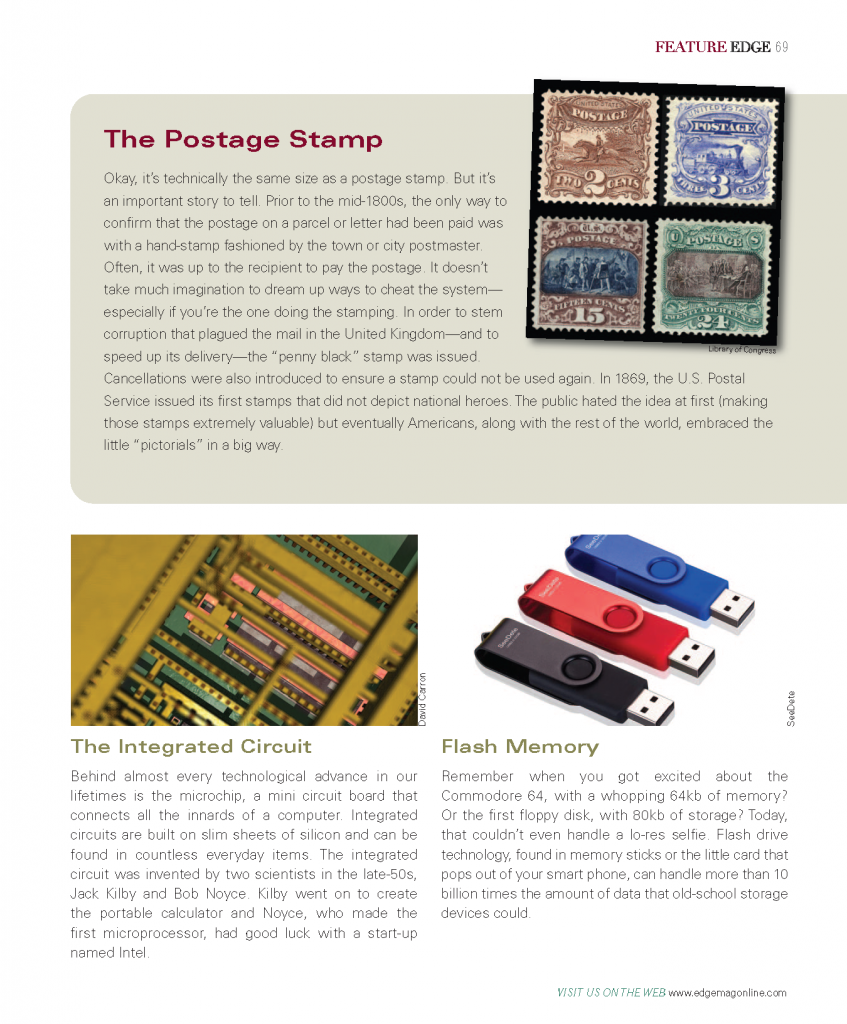
A Path Between EXTREMES
DBT treatment builds a life worth living.
By Christine Gibbs
May is Mental Health Awareness Month. It would not be an exaggeration to say that, thanks to the COVID pandemic, this May we are more aware than ever of the precarious state of our nation’s mental health. The National Institute of Health (NIH) has compiled a daunting set of statistics, including that one in five Americans today is living with at least one of a wide range of mental issues. That translates into more than 50 million people.

www.istockphoto.com
Not that COVID is the lone culprit. Pre-pandemic life was already a pressure cooker of high-stress triggers such as financial panic, job anxiety, inflation, debt— I could go on and on, but suffice it to say that life for almost everyone can be a challenge. However, burnout syndrome has certainly been exacerbated by COVID these past two-plus years and there has been a noticeable increase in the number of Americans suffering from depression and anxiety that can reliably be traced to COVID-specific restrictions, from lockdowns to mask mandates. That most definitely includes children, adolescents and emerging young adults who are exhibiting signs of depression in greater numbers as a result of forced isolation and remote education.
What is the actual degree to which we can attribute our elevated levels or incidences of stress and depression to the pandemic? That is endlessly debatable…and it also misses the point. If it feels as if you or a loved one is struggling emotionally—regardless of why—the more critical question is where should I look for help? Admitting that a problem exists, and recognizing that the situation has escalated to a point where managing it without help is no longer possible, is a critical first step. If you or someone close to you is exhibiting behavior that is concerning, harmful or uncontrollable, the time is now to seek help. Trinitas offers a full array of mental health support and services, providing almost 200,000 behavioral health outpatient visits a year.
One program that has enjoyed particular success is the Trinitas Institute for Dialectical Behavior Therapy and Allied Treatments—the DBT Institute, for short— which is headed by Co-Directors Atara Hiller, PsyD and Essie Larson, PhD. Dr. Hiller manages the Adolescent DBT Program, and Dr. Larson runs the Adult DBT Program.
“It Depends”

Atara Hiller, PsyD

Essie Larson, PhD
DBT is a type of cognitive behavioral therapy with the goal of building a life worth living by developing behavioral skills to improve impulse control, emotional regulation, interpersonal effectiveness and overall functioning, and replace old harmful ways of thinking and behaving with new, healthier ones. A fundamental principle of DBT treatment is finding “middle-of-the road” solutions to help overcome the extreme positions that interfere with adapting to real-life situations. In other words, for many of us, the concept of “it depends” is a fact of life—we recognize that the everyday decisions and situations we encounter are not binary, either/or, black-and-white, etc. For some people, however, this is extremely difficult to accept and tolerate. For them, the world is filled with battles between opposing forces of, for example, right and wrong or good and evil. Needless to say, it is an emotionally exhausting way to go through life.
When discussing the dialectical perspective, Dr. Hiller explains, “The key to successful adjustment may be accepting that the real truth is that there is no absolute truth at all. DBT accepts that two seemingly opposite truths can both exist at the same time, and that it is possible to modify behavior patterns to adopt a reasonable middle ground as a healthier response, instead of succumbing to either extreme position.”
“The reality that is encouraged is that there is no absolute truth, but rather everything is a mixed bag,” Dr. Larson adds.
The emphasis in DBT is placed on increasing emotional and behavioral regulation so that individuals can make effective choices that help them work towards their long-term goals. Clients undergoing this therapy are passionate about almost everything—and consequently are often judged as being irrational, attention-seeking, excessive or hot-headed because they react so quickly and take so long to cool down.
At the DBT Institute, these individuals are regarded as “exquisitely sensitive” and “super sensors.” The objective is to teach and encourage self-acceptance by validating their passionate internal experiences, while also guiding them to identify and change behaviors that interfere with reaching their personal goals. By providing a supportive, validating, and goal-oriented therapeutic environment, the team of DBT therapists helps the clients (and in the case of adolescents, their families as well) to learn and use the variety of skills taught in the treatment.
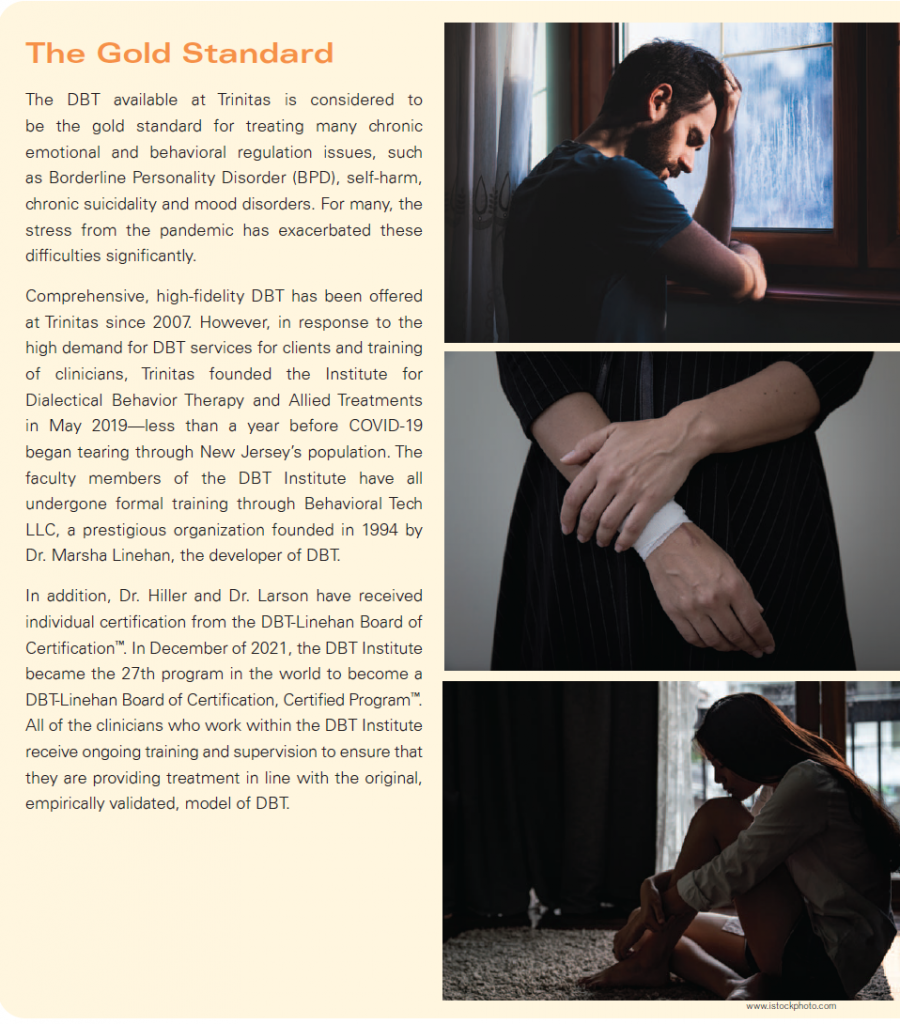 Getting Help
Getting Help
We all know family members, friends or co-workers who seem to be intractable in their views and behavior at times. However, individuals who benefit the most from DBT struggle with this at a much higher level of intensity. Typically, a DBT candidate presents as a person with challenges in multiple areas of life who has had previous unsuccessful experiences with other types of therapy. Behaviors such as self-harm, impulsivity, substance use, eating disorders and aggression become these individuals’ primary problem-solving methods to tolerate the debilitating emotional distress that they experience. Unfortunately, these behaviors seriously interfere with quality of life and social integration.
The objective of developing a healthy skillset is reflected in the DBT mantra: Build a life worth living! Comprehensive, outpatient DBT programs that follow the empirically based model are organized into three hours of weekly meetings—consisting of two hours of skills group (Adult DBT groups are for the clients only, while Adolescent DBT groups include parents/ caregivers) and one hour of individual therapy for the client. Between session, phone coaching is also available to help clients use their skills in their day-to-day lives. In addition, both the Adult and Adolescent programs offer services for graduates of the program to help them further solidify what they have learned. Across the Adult and Adolescent programs there are nine staff members, including Dr. Hiller and Dr. Larson. In addition, there are between 7 and 10 trainees at any given time. Several of the staff and trainees see both adult and adolescent DBT clients.
The adult DBT program requires an initial commitment of 52 weeks, followed by the opportunity to extend for another 26 weeks to complete two full cycles of the skills curriculum. The duration for one cycle of the curriculum for English-speaking adolescents/families is 20 weeks, whereas for Spanish-speaking adolescents/ families, the duration for one cycle of the curriculum is 24 weeks (because the groups are provided in both English and Spanish). Adolescent DBT requires that at least one parent/caregiver must also commit to the treatment by attending group and family sessions, and individual parent coaching sessions as needed. This is because having parents/caregivers support the use of DBT skills is essential. Clients in the Adult DBT program attend treatment alone with free monthly education nights provided for family members and friends who are interested in learning more about DBT treatment, DBT skills, and supporting their loved ones. All types of insurance are accepted. There is currently a substantial waiting list for both programs.
 During the pandemic, the Institute continued to serve clients through Zoom sessions. Despite an adjustment period, therapy quality was never compromised. Some clients (especially those living at a distance from Trinitas) found teletherapy to their liking, while others rejoiced when in-person therapy resumed. Most importantly, all of the DBT clients continued to make progress in the face of heightened stress and anxiety.
During the pandemic, the Institute continued to serve clients through Zoom sessions. Despite an adjustment period, therapy quality was never compromised. Some clients (especially those living at a distance from Trinitas) found teletherapy to their liking, while others rejoiced when in-person therapy resumed. Most importantly, all of the DBT clients continued to make progress in the face of heightened stress and anxiety.
“The skills we teach were the perfect tools to deal with uncertainty and major life changes,” says Dr. Larson.
Key Ingredient
Both Dr. Hiller and Dr. Larson emphasize that the indispensable component of successful completion of the DBT program is “commitment…commitment…and more commitment.” Clients must first believe, even if hesitantly, that their life can potentially improve and then they must be willing to put in the hard work—with the support and encouragement of their therapists—to start making it happen. “The foundation of any DBT program is that it is totally voluntary and therefore, by definition, requires an incredibly high degree of resolve,” Dr. Hiller explains. To be accepted into either the adult or adolescent programs, clients must sign a personal contract outlining the terms of their commitment.
 Modifying ingrained behavior patterns requires a whole-hearted dedication to achieving a balance between emotional extremes and learning how to identify and make more effective choices. Before being accepted, the DBT team spends time screening prospective clients on the telephone, followed by personal interviews to discern levels of motivation, increase commitment, troubleshoot potential issues and agree on a collaborative approach to reaching goals. The DBT program provides the tools and encouragement; the commitment to apply them to daily life is up to the client.
Modifying ingrained behavior patterns requires a whole-hearted dedication to achieving a balance between emotional extremes and learning how to identify and make more effective choices. Before being accepted, the DBT team spends time screening prospective clients on the telephone, followed by personal interviews to discern levels of motivation, increase commitment, troubleshoot potential issues and agree on a collaborative approach to reaching goals. The DBT program provides the tools and encouragement; the commitment to apply them to daily life is up to the client.
As a goal-oriented therapy, successfully completing what is referred to as Stage 1 DBT treatment in the Adult Program requires clients to demonstrate at the end of two cycles of the curriculum that they have moved closer to their goals by learning and applying the skills taught to them. In the Adolescent Program successfully completing Stage 1 DBT treatment may occur after one cycle, although most families stay for two cycles to solidify the improvements. Time limited graduate level treatment can be arranged for certain clients in both the Adult and Adolescent Programs, however Dr. Larson emphasizes that, compared to many other types of mental health therapy, DBT is meant to have a tangible end point. “DBT is a recovery-based model,” she says. “The goal is to get clients to the point where they no longer need therapy.”

Editor’s Note: The Trinitas Institute for DBT and Allied Treatments for adults is located at 654 East Jersey Street in Elizabeth (908) 994-7087. Adolescent DBT treatment is located at 655 East Jersey Street (908) 994–7378 (English) and (908) 994–7589 (Spanish). For more information, visit dbtnj.org. The Institute also offers a variety of training, supervision and consultation services to support clinicians interested in learning DBT or to hone their DBT therapy skills. Clinicians who are still in school or already licensed may apply to formally join the DBT Institute teams for comprehensive training. Applications can be found on the website.
A change of environment can transform the world of a master painter, photographer and art conservator. Villo Varga revealed her penchant for messages all over New York City. Born in Budapest, Hungary she defected in 1983, having garnered hefty experience, studying with Professor Erno Fischer at the Academy of Fine Arts and the Museum Restorers’ Methodology Center, working as conservator of the Hungarian National Gallery, and working as professional photographer. But in America, her artwork turned to ever-changing urban “messages” and images not to be lost forever.



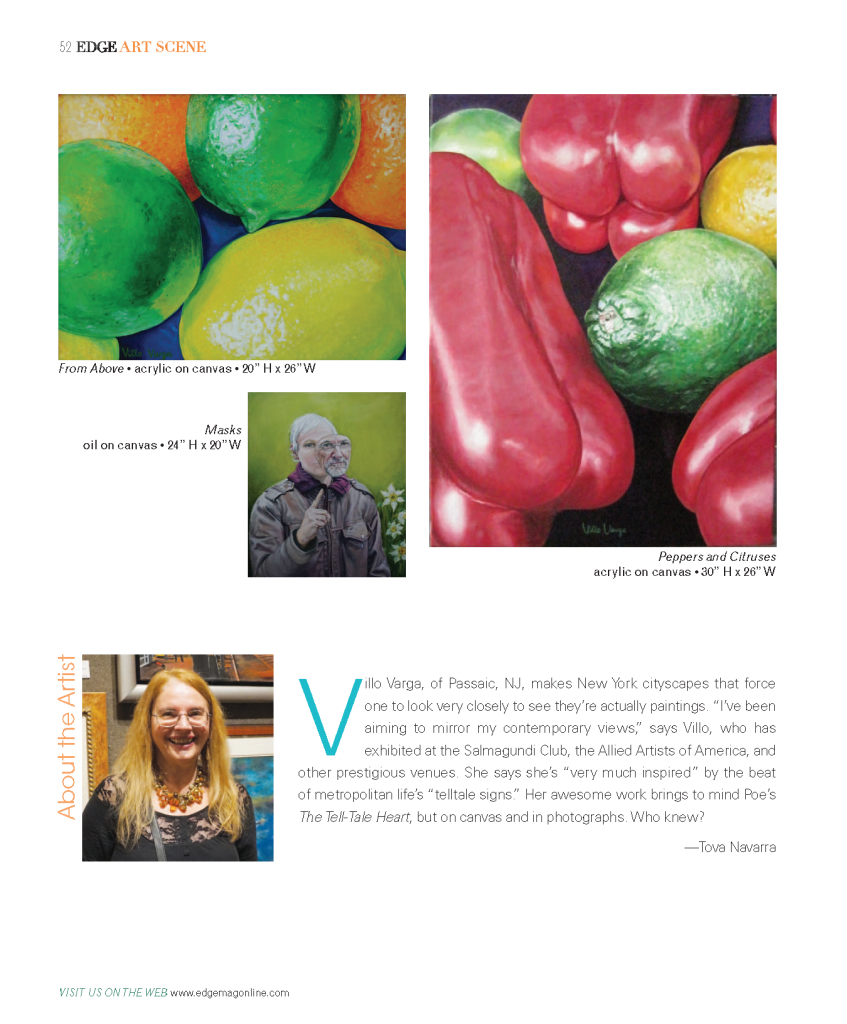
Villo Varga, of Passaic, NJ, makes New York cityscapes that force one to look very closely to see they’re actually paintings. “I’ve been aiming to mirror my contemporary views,” says Villo, who has exhibited at the Salmagundi Club, the Allied Artists of America, and other prestigious venues. She says she’s “very much inspired” by the beat of metropolitan life’s “telltale signs.” Her awesome work brings to mind Poe’s The Tell-Tale Heart, but on canvas and in photographs. Who knew?
—Tova Navarra
Buzzing Under the Radar
In this year of vaccine hyper-awareness, the first-ever vaccine against the deadliest of all human parasites has gone almost unnoticed.
By Mark Stewart
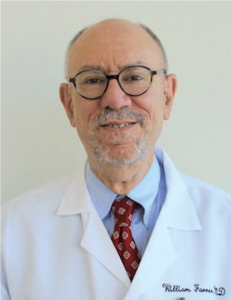 Over the past year, chances are that you have heard more facts and figures about vaccines than in all of the other years of your lifetime combined. Yet while we have all become intimately familiar with the COVID-19 vaccine, there is another vaccine on the market, which—in any other year—would have been the real headline-maker. Last year, the World Health Organization (WHO) announced that it had approved use of the first-ever vaccine that is effective against malaria, a mosquito-borne disease that can kill within 24 hours of its flu-like symptoms appearing.
Over the past year, chances are that you have heard more facts and figures about vaccines than in all of the other years of your lifetime combined. Yet while we have all become intimately familiar with the COVID-19 vaccine, there is another vaccine on the market, which—in any other year—would have been the real headline-maker. Last year, the World Health Organization (WHO) announced that it had approved use of the first-ever vaccine that is effective against malaria, a mosquito-borne disease that can kill within 24 hours of its flu-like symptoms appearing.
“Malaria vaccines have been in development since the 1960s,” says Dr. William E. Farrer, Chief of Infectious Diseases at Trinitas (left). “On October 6, WHO released a recommendation for widespread use of the RTS,S/AS01 malaria vaccine among children living in sub-Saharan Africa and other regions with moderate to high P. falciparum malaria transmission.”
Plasmodium falciparum is the parasite that transmits falciparum malaria, the deadliest form of the disease, which accounts for roughly 50% of cases worldwide and virtually all malarial deaths. For the record, that makes P. falciparum the deadliest of all human parasites. “The vaccine requires three primary shots and a booster,” Dr. Farrer explains. “In large trials, it decreased clinical and severe malaria by about 30%. This is only moderate efficacy, but represents a historic step forward in controlling malaria and could prevent many cases of this dread disease and many deaths.”
Dr. Tedros Adhanom Ghebreyesus, WHO Director General, also described it as a historic moment, predicting it would prevent thousands of deaths a year. Currently, malaria is estimated to kill more than a quarter-million young people annually and over 400,000 in all (estimates fluctuate wildly depending on the source, but the numbers are undeniably huge). Even when it does not kill, malaria can return to sicken the same person several times over the course of a lifetime, or even in the same year—devastating the immune system over time, which makes it vulnerable to other diseases.
 The new vaccine, which has been recommended for children five years old and younger, marks a significant step in an effort to conquer malaria that has seen worldwide deaths drop by 60% in the last two decades, and the number of cases cut nearly in half. Unfortunately, progress reached a kind of plateau around 2015 and the numbers have remained more or less constant since then. The recent breakthrough, which activates the immune system to battle the malaria pathogen, owes much to the work done in speeding COVID vaccines to market.
The new vaccine, which has been recommended for children five years old and younger, marks a significant step in an effort to conquer malaria that has seen worldwide deaths drop by 60% in the last two decades, and the number of cases cut nearly in half. Unfortunately, progress reached a kind of plateau around 2015 and the numbers have remained more or less constant since then. The recent breakthrough, which activates the immune system to battle the malaria pathogen, owes much to the work done in speeding COVID vaccines to market.
That being said, malaria is not caused by a virus, like COVID, nor by bacteria. Malaria is spread through a parasite which has over 5,000 genes, as opposed to SARS-CoV-2, which has only 11. That is a major reason why malaria has been so good at befuddling vaccine researchers. Indeed, the new RTS,S vaccine will still need to be combined with conventional malaria-prevention strategies—insecticides, netting and artemisinin-based drug therapies—in order to be fully effective. Artemisinin, discovered in 1972, is extracted from sweet wormwood, a plant used in traditional Chinese medicine; it earned the woman who discovered the breakthrough medicine, Tu Youyou, a Nobel Prize. The maddening aspect of fighting malaria is that a vaccine series must target the parasite at all of the different stages of its life cycle. The idea is to “get it” at one stage if it “misses it” at another, with the goal being to kill the parasite before it infects the liver.
 Impact on the Home Front
Impact on the Home Front
Does the malaria vaccine have any relevance here in New Jersey? Absolutely. More than 2,000 malaria cases are reported in the United States each year, the vast majority coming from Americans vacationing in tropical countries or returning to their countries of origin to visit friends and family. Malaria can be transmitted to a fetus by its mother when bitten by a mosquito carrying the disease, resulting in low birth weight or premature delivery, as well as other more serious (and potentially deadly) health problems to a newborn.
The number of reported cases in Western Hemisphere nations with strong ties to the Garden State—including Mexico, Brazil, Colombia, the Dominican Republic, Nicaragua and Haiti—top 5 million annually. That pales in comparison to India, which recently topped 100 million cases. Vietnam and Indonesia may have more than an estimated half-billion cases in a typical year.
Humans and mosquitoes both thrive near water, and thus have lived together for countless thousands of years—so long, in fact, that this relationship has “imprinted” itself on our genome. The origin of sickle cell anemia, for instance, is a genetic variation that very likely began as a result of malaria. Most people develop antibodies against malaria by the time they reach adulthood, but it takes a grim toll on children, particularly in Africa, where more than 90% of the world’s cases are recorded. The new vaccine completed its first trial run from 2019 to 2021 in Ghana, Kenya and Malawi. It proved particularly effective against Plasmodium falciparum—as mentioned earlier, the deadliest malaria parasite (there are five in all).

www.istockphoto.com
Perhaps because humans and mosquitoes share an evolutionary history, the disease has shown an ability to mutate in response to everything we’ve done to fight it. It is anticipating the next mutation (and the next and the next and the next) that also proved challenging to the development of an effective vaccine. An example of this is the discovery in 2019 of a malarial strain that is resistant to Artemisinin. The mutation took place in Africa instead of Southeast Asia (where malaria mutations typically take place), further raising concerns because the parasite would have mutated independently to resist treatment.
A First Step, But Hardly the Last
The new RTS,S vaccine is not the be-all end-all in the fight against malaria, as Dr. Farrer pointed out. The 30% effectiveness number has drawn criticism from those who would wait for a more effective vaccine before launching the ambitious four-dose campaign in some of the world’s most remote, at-risk regions. However, it is an enormously encouraging first step upon which better vaccines can be built. The mRNA technology wielded against COVID, for instance, holds huge promise in this regard.

www.istockphoto.com
The new vaccine, which goes by the brand name Mosquirix, is the culmination of a research and development partnership, spearheaded by the pharmaceutical giant GlaxoSmithKline, that began in 1987. In recent years, it has been funded by the Bill & Melinda Gates Foundation, among others. In addition to being the first malaria vaccine, Mosquirix holds the distinction of being the first-ever vaccine for any parasitic disease.
An uptick in HS cases has the Trinitas Wound Center on alert.
By Mark Stewart

www.istockphoto.com
Healthcare consumers are always encouraged to seek second opinions if they have doubts or questions about a diagnosis or course of treatment. But we don’t always do that, do we? Especially not for the “small stuff”—for instance, conditions or maladies that don’t seem like a big deal at first. Unfortunately, small stuff can become a big deal, leaving us embarrassed and confused about whom to trust and where to find someone who’ll get it right. The Trinitas Center for Wound Healing and Hyperbaric Medicine sees more than its fair share of cases like this. The combination of a missed diagnosis and/or a patient’s frustration/fear/procrastination can result in the kinds of tough cases that Dr. Michael Zaboski, Medical Director of the Wound Center, encounters almost every day.
Recently, Dr. Zaboski noticed an uptick in the number of patients presenting with advanced cases of Hydradenitis Suppurativa—HS, for short—and it has him puzzled and concerned. “We had four active cases here in February, and each individually had been chronically ill for years,” he says. “That may not seem like a lot, but in my entire career here I’ve seen maybe 15 or 20.”
HS is a painful and unsightly skin condition for which there is currently no cure. However, it is treatable and manageable when caught early. The problem is that some doctors, including experienced dermatologists, do not recognize HS in its early stages, leading to misdiagnosis.

BMC Dermatology
HS outbreaks occur when the tiny sebaceous gland, which opens into a hair follicle and secretes “lubricant” for the hair and skin, does not produce properly and becomes blocked, creating a small, painful bump. These bumps occur in clusters near apocrine (sweat) glands, most commonly in the underarm and groin areas—including the gluteal, perineal and sacral regions—under the breasts and occasionally on the neck. HS may look like a bad case of acne at first, but despite the fact that it frequently starts in a person’s late teens or early 20s, it’s not acne at all.
“Hydradenitis Suppurativa ranges from a field of dark red boils or painful bumps in the underarm or private areas—which can be mistaken for acne—to more severe bumps that form sinuses that connect and spread, almost like a prairie dog field,” Dr. Zaboski explains, noting that these correspond to Class 1 and 2 on the Hurley scale—a severity assessment tool developed by dermatologist H.J. Hurley in the 1980s. “Class 3 is when these sinuses become confluent with large bags of pus and open sores and lesions. For the majority of HS patients, the condition is painful and hygienically difficult. It’s embarrassing and disfiguring.”
Most cases of HS are caught early and treated. However, when the Wound Center sees HS patients, they tend to be undiagnosed—or have not responded to dermatological treatment. Others come to the Emergency Department with an abscess, having no idea what the cause is.

Hidradenitis Awareness
“These cases can be extraordinarily advanced,” says Dr. Zaboski. “I have treated two young men, both in their 20s, who have no job and didn’t go to college, and blamed it on the disease. They were basically unable to function. It was too painful to walk and too painful to sit. Another man came to us with a quarter of his body area covered with lesions and had almost no normal skin from his waist all the way down his thighs. He’d had this for five years.”
HS is associated with several comorbidities, including obesity, diabetes, high cholesterol and hypertension (and often a combination of two or more). As diabetes and obesity increase in the population, so too will HS. There also appears to be a strong family component. Not surprisingly, depression, is common with this disorder.
Although there is no cure for HS, many patients respond well to Metformin, a drug that controls blood sugar. In the past, many HS patients had their boil-like bumps lanced, but incision and drainage simply prolonged the disease and also caused scarring. Steroid injections into the lesions can quiet the disease until other medicines kick in. Treatment is a long-term proposition, which typically involves anti-inflammatories and antibiotics until there is improvement. The goal is to stabilize patients medically and, if they haven’t improved, refer them for a surgical procedure, which goes under the skin to remove glandular tissue. This can get very complicated and may involve skin grafts and plastic surgery.
“The earlier we treat it, the better,” says Dr. Zaboski. “Also, a recent study suggests that large-scale weight loss may lead to a cure, so bariatric surgery may be an option. And HS can go into remission. Even in those instances, however, it requires chronic maintenance to prevent it from flaring up and getting worse.”
Are you ready for your first electric vehicle? Is your home?

www.istockphoto.com
The recent surge in the price of gasoline and the geopolitical mess that caused it has a lot of New Jersey drivers hitting the accelerator on their decision to purchase an electric vehicle (EV). State and federal policymakers have already set the finish line on internal combustion engine (ICE) automobiles at 2050, less than three decades away. For many of us that day can’t come soon enough. That being said, it’s not as simple as flipping a switch. To meet this lofty goal, energy producers, automakers and consumers must match technology, political policy and current inventory headwinds with financial incentives and seamless customer satisfaction. It’s a tall order.
One of the first questions homeowners (and, for that matter, renters) have when considering an EV purchase is Can I charge up without leaving my driveway? It’s a valid question. At the moment, New Jersey ranks toward the bottom of the “charging stations per resident” chart, although given how road-reliant we are, that is destined to change. If you’re suddenly in EV buying mode, however, promises don’t get you to the nearest charging station.

www.istockphoto.com
The average cost of a home charging unit is $750 before professional installation. You will need to determine the most logical space for the unit, thinking about its distance from the main breaker (usually in the garage) and where the charging port is located on the car. A dedicated 220/240 volt breaker is required, and a professional electrician has to install it. Depending on the work and permits needed, that can run upwards of $1,000. Utility companies sometimes offer special rates to homes charging vehicles, based on time of day, day of the week and demand. Homes with solar power may out the various car forums online for tips and tricks from brand owners on what make and model of charger works best in your area of the country, when to charge and how to track your car’s kilowatt usage and regeneration when driving between charges. Most EV owners will tell you, only charge when your battery is close to empty. also benefit from extra discounts. You’ll also want to consult your home insurer to see if you need an additional rider or disclosure when adding a charging unit to your home. In addition, it’s a good idea to check
for EV drivers living in condominium apartments or multi-family dwellings, the lack of charging capabilities is a concern for public utility companies like PSE&G and JCP&L. The redistribution of power to meet real-time charging demand will likely involve building micro-grids. Micro-grids are smaller networks of solar-powered homes and alternative-energy capture sites, which redistribute excess power into the public-private sector closest to high-demand centers. Garden State property owners may find their rooftops are going to increase in value as solar resale becomes a necessity.
If you are a tenant, installing a charging station can be tricky. While some newer apartment complexes offer this amenity, older buildings likely do not. Obviously, tenants need to discuss installing a new 240 charging unit with their landlords. Some may see it as a way to increase rent, or make their apartments more appealing. However, as a rule, most will want tenants to share some of the cost, or perhaps all of it. You can also charge an EV with a standard 120 outlet, but this can be slow going—an overnight plug-in may only get you an hour’s worth of commuting. There’s a reason why this is nicknamed “trickle charging.” On the plus side, a slow charge is much better for battery life.


Tesla, Inc.
Outside of the added expense of installing a charging unit, there are three other major concerns with which newcomers to the EV market must familiarize themselves. Range anxiety is still the number-one obstacle to electric vehicle adoption. Currently the choice of EVs features a range of 50 to 400 miles between charges, with prices from $25,000 to $200,000. A manufacturer’s published range will vary based on driving behavior, outside temperature and vehicle load. Parallel Hybrids run on electric plug-in charging for a limited range and then switch to gas after the charge runs out. The transition is seamless while driving, however automakers are reluctant to keep this EV design because the weight of two drive differentials reduces the capacity for more batteries. Thanks to Tesla, the trend is towards 100% electric long-range batteries. Lithium battery-makers Panasonic and LG are pushing the range, but battery fires remain a concern among many consumers. Lithium-Sodium, Hydrogen and Propane alternatives are still in testing mode.

www.istockphoto.com
The second major concern amongst EV shoppers is price. Prices for EV’s run the gamut, from a low of $38,000 for a Hyundai Ioniq to Tesla and Karma, in the $150,000 range. At the start of 2022, automakers experienced a surge in EV orders thanks to rising gas prices, which only increased after the United State imposed sanctions on Russian energy imports. Unfortunately, the lack of dealership inventory pushed consumers into hybrid purchases, which enjoyed record sales. I say unfortunately because, over time these models are not reducing emissions and will eventually be sidelined along with traditional internal combustion cars.
Among those who did find available EV’s, many enjoyed very generous trade-in allowances for their older hybrids and ICE vehicles, as the used car market is still booming. And then there are the tax credits and rebates that are still available. In New Jersey, rebates up to $5,000 are being offered to those who buy or lease a new electric vehicle. There are still federal tax credits of up to $7,500 being offered for EV purchasers, although it’s worth noting that tax credits are not part of the president’s infrastructure bill.
While financial incentives cushion the sticker shock some EV shoppers experience, know also that the revenue lost from gas tax is likely to result in a road usage charge of some kind on EV’s. Last year, Utah charged a flat annual fee of $20.00 for a gas hybrid and $120.00 for an 100% electric model—or the option of paying 1.52 cents per mile. Consider the cost of such fees along with the energy costs when deciding which model is right for you.
The third concern of EV shoppers, addressed earlier in this story, is when, where and how to charge. Right now, 70% of all charging in America is done at home—overnight or during off-peak hours.
Adding a dedicated charging unit to your home will max the capacity of a 100-mile-plus battery to 100% overnight at a 100 kw/h rate. Household chargers can also be designed to run off rooftop solar when tied to a battery storage system or a dedicated circuit in the breaker panel. Direct Current (DC) units—also called Level 3 chargers—are designed for EV models made on or after 2018. A DC charger can replenish about 240 miles in a long-range, 300-mile electric car in less than half an hour. Tesla has converted most of its charging banks to DC units in the hopes of reducing wait times at their popular hubs along major transit routes, tourist destinations, upscale hotels and casinos. Recently added software warns the Tesla owner when the car is fully charged and must be moved quickly. Drivers who leave their vehicle in a charging spot after notification will be charged an additional fee. At the upper end of the market, speed is everything. Leading the charging speed race is Porsche and its Turbo unit, capable of pushing 800 volts at 450 kw/h. The company’s $82,000 Taycan can be recharged to 100% in under 10 minutes. However, the cost of this “super charge” at peak rate can run into the hundreds of dollars.


Upper Case Editorial
Right now, residential charge station suppliers include ChargePoint, Blink, ElectrifyAmerica, TESLA, EVGO and VOLTA. The year, make and model of your vehicle, as well as its charging receptacle, contributes to speed of charging and cost per minute, or kilowatt cost. The average cost when charging off-peak at home is .045 per mile when using .15 per kwh as the basis. Tesla and Lucid vehicles are the least expensive models to charge.
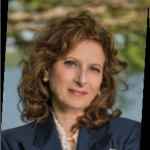
Joan Michelson
When charging away from home, the costs can vary widely. Electric owners use a subscription card or app on their phone to utilize most stations, however there are no regulations on what a station provider can charge, by time, kilowatt hour or both. Some hotels, casinos and retailers have provided the space and power as a customer service, but don’t bet on free charging forever. Only VOLTA does not require a subscription or charge for the power, covering their costs through sponsorship advertising placed on the station.
What’s down the road for new EV owners? Automakers across the globe are revamping their supply-chain sources for EV batteries by partnering or purchasing manufacturing capability. Even so, Joan Michelson (right) points out, “deciding which EV to buy is going to be complicated.” Michelson, the former head of Communications and co-head of sales and marketing at Chrysler’s Global Electric Motorcars, says buyers should be prepared to consider all kinds of variables: “Your lifestyle, your transportation needs, whether you have access to charging—I don’t, in a condo building, for example—where you drive regularly, whether it’s your only car or a second car, as well as overall cost of ownership.” She has watched the evolution of electric vehicles for two decades and speaks to all things electric in her Electric Ladies podcast.
Just back from the 26th UN Climate Change Conference in Glasgow, Scotland, Michelson offers some innovative ideas on the future of EV ownership and the new automakers behind them. “As the issues of lithium battery warranty, repair, disposal and sustainability become greater, there could be an
Joan Michelson OEM (Original Equipment Manufacturer) option for an EV lease subscription plan that balances the higher cost of an EV with the concern surrounding technology changes. Tax credits from the federal and state governments will also help consumers and manufacturers ease into the investment of an EV.”
Another appealing aspect of switching to an electric vehicle is the “dealer disruption” ushered in by Tesla. EV makers you’d never heard of a couple of years ago are bringing new technology and unique styling to the market—without dealership sales tactics or service centers. Rivian, Lucid and Lordstown Motors have made news with long-range trucks and luxury cars, and are now taking orders for delivery in 2022–2023.

www.istockphoto.com
 Michelson is especially interested in what’s happening at Piech Automotive—founded by Porsche family heir Anton Piech—which is creating a unique car company that has broken with traditional manufacturing theory. Peter Thiel, the founder of PayPal, is an investor and several “A-list car guys” from Porsche/VW Group, BMW, and TESLA have joined the company. Piech is offering short-term leasing of EVs; it will be interesting to see if this leads people to buy more EVs as a result of driving them for a few months—as well as the impact on dealerships, since they are leasing directly to consumers and not going through dealerships.
Michelson is especially interested in what’s happening at Piech Automotive—founded by Porsche family heir Anton Piech—which is creating a unique car company that has broken with traditional manufacturing theory. Peter Thiel, the founder of PayPal, is an investor and several “A-list car guys” from Porsche/VW Group, BMW, and TESLA have joined the company. Piech is offering short-term leasing of EVs; it will be interesting to see if this leads people to buy more EVs as a result of driving them for a few months—as well as the impact on dealerships, since they are leasing directly to consumers and not going through dealerships.

Audi
The Piech brand is built on the concept of modular vehicle components, long-range batteries and ultra-fast charging. Their sedan, SUV and sportscar designs use mix-and-match compatibility for plug-in, traditional ICE and hydrogen batteries capable of 80% charge in under five minutes—with simpler parts and software upgrades.
Taking a cue from Tesla, Ford, Toyota and other brands are testing the direct-to-consumer order process, eliminating the dealer haggling in order to compete with online showrooms and vendors such as Carvana and Vroom. Manufacturers are actually urging their dealer networks to revamp the old-time sales/service model to embrace EV charging as a revenue stream. AUDI is all-in on this idea, having built its first Charging Lounge back in December as a hub for business and social meet-ups in a café-type environment while your car is charging.
It’s in Germany, so don’t get excited yet. However, whether you are a current owner or still just window-shopping, you can get excited about the myriad ways that traditional automotive brands and dealerships will define themselves as part of the EV revolution.
Editor’s Note: Sarah Marks is a car concierge and automotive consumer advocate for all things car-related. Sarah lives in Henderson, Nevada with her husband, Norman. You can ask her car questions at her website: www.mycarlady.com.
“Waygu beef tartare is, in its elegant simplicity and focus on flavor, divine.”
 Two curries, a carbonara and a cassoulet, plus plancha’d fluke, pastrami’d salmon and a pudding of sticky dates are on Ehren Ryan’s always-evolving menu on this night at Common Lot, world tour and tour de force colliding at the two-storied epicenter beloved by fellow chefs and home cooks.
Two curries, a carbonara and a cassoulet, plus plancha’d fluke, pastrami’d salmon and a pudding of sticky dates are on Ehren Ryan’s always-evolving menu on this night at Common Lot, world tour and tour de force colliding at the two-storied epicenter beloved by fellow chefs and home cooks.
I break into the light crust of breaded paneer, swiping the milky cheese in its curry, a wash of sienna and olive green with dots of tangerine and lime. The colors are retro 1970s, but the tastes are fashion-forward. Ryan’s singularly clear-eyed abracadabra refreshes the roles of ginger,  mustard seeds, cinnamon, turmeric and their comrades, allowing them to add warmth and depth and a mysterious range of emotions to a dish gone stale. Fried paneer, the mozzarella sticks of South Asia, is no longer the equivalent of bar food; it simply raises the bar on what to do with a staple whose frequent modifier is bland.
mustard seeds, cinnamon, turmeric and their comrades, allowing them to add warmth and depth and a mysterious range of emotions to a dish gone stale. Fried paneer, the mozzarella sticks of South Asia, is no longer the equivalent of bar food; it simply raises the bar on what to do with a staple whose frequent modifier is bland.
 Its tangle of greens, leaves of emerald, forest and hunter veining rich cordovan, tango with a chiffonade of pale, crunchy cabbage and puffed rice kernels. You’ll want to make the effort to get some of everything on your forkful—paneer, curry, leaves, crisped things—so you can understand what Ryan has orchestrated: peak culinary confluence.
Its tangle of greens, leaves of emerald, forest and hunter veining rich cordovan, tango with a chiffonade of pale, crunchy cabbage and puffed rice kernels. You’ll want to make the effort to get some of everything on your forkful—paneer, curry, leaves, crisped things—so you can understand what Ryan has orchestrated: peak culinary confluence.
In the six years since Ryan, who hails from Australia, and his wife Nadine, born in Austria, opened Common Lot in Millburn, they have been influencing those open to exploration of new foods as well as forever-there foods in need of a re-set. More than any other Garden State restaurant serving forth in this century, Common Lot has presented the next big thing. And when it’s done with it, typically well before it’s run its course, it’s gone. To be replaced, we soon learn, by chef’s sorcery, a combination of whimsy, whim and, always, wisdom.
I may miss the dish I always thought of as bo ssam lamb, but I’ll never believe I’m settling for an also-ran in the meat department with Waygu beef tartare, showered with salty parmesan that rather looks like flakes of sea salt, near-translucent wisps of pickled onion and capers, fried until beautifully bloated and pricked open so they, too, can add their rush of salinity to the plush beef. It’s all encircled by a puree of arugula that brings more than a spot of pepperiness to the dish. If Ryan wanted to play cute, he could call this Salt & Pepper Beef. But he needs no gimmicks, not in title, not in concept. His Waygu beef tartare is, in its elegant simplicity and focus on flavor, divine. Similarly, he’ll cure salmon with pastrami seasonings and present it with carved petals of ginger, a subtle crème fraiche and dabs of salmon roe. The result: equal parts restraint and reverie.
There are occasional missteps. Risotto is brushed up with crab bisque, but its sauce is out-of-whack acidic. I’m guessing the lemon employed was the culprit, either inherently lacking acid-to-fruit balance or too liberally applied. I love the idea of creamy crab with sturdy Italian rice and ate up every shred of lump crab and micro-leaves of celery garnishing the dish. Maybe use Meyer lemons here?
They’ll figure it out, I think to myself as I bust open a fillet of plancha-seared fluke. I’m skeptical about this dish, not because I haven’t had expertly cooked fish here many times before, but because it’s billed to come with a truffled brown butter as well as a celeriac-truffle puree. Pretty much anything with truffle oil obscures the taste of what it comes in contact with. Yet no aggravated assault on an innocent ingredient here, but rather a minuet between the mash of oniony-celery-sweet-garlicky root vegetable and its controlled musky-nutty partner—and a nifty pas-de-deux of lightly briny, faintly sweet fish and woodsy truffle. Learning is good, isn’t it?
 Speaking of woodsy and musky, the star of duck leg confit cassoulet is the refined duck jus, which penetrates the preserved leg, the white beans, the slivers of sausage, nibs of carrot and what appeared to be a few teeny cubes of an ivory root vegetable so smitten with the duck juice that it went Zelig. Quite the entertaining mimic.
Speaking of woodsy and musky, the star of duck leg confit cassoulet is the refined duck jus, which penetrates the preserved leg, the white beans, the slivers of sausage, nibs of carrot and what appeared to be a few teeny cubes of an ivory root vegetable so smitten with the duck juice that it went Zelig. Quite the entertaining mimic.

A pale green curry, with coconut milk as its base and Thai basil as its muse, is invigorated with chili oil and, in turn, invigorates a stew of shellfish and finfish. I don’t want to ruin the Pollock-like speckles and drips of oil that give the plate the kind of eye-candy appeal I personally shun, but once I swish the chili oil into its honeydew-hued broth, I know it’s all meant to be. A lemon cake that was to be soaked with vanilla was too dry to mean much to its plate mates of yuzu curd and mascarpone, let alone crumbles and grains of pistachio. But a sticky date pudding given the surround-sound treatment of a sleek caramel made from prunes and brandy was topped by a blot of clotted cream that seemed too generous until I demolished it all and wanted more, please. Ryan and his kitchen crew may seem all over the map, but when they go cheeky with an old-school dessert like this, I’m glad to be gobsmacked. Is that the carbonara? Passing right by me is  something I’ve not ordered on this night at Common Lot. My, it looks fine. I smell smoky and I feel my gastric juices start to flow again. That’s what Ehren Ryan, the maestro of this worldly-yet-welcoming kitchen in staid, sedate Millburn, will do to you. If you’ve been to Common Lot before and thought you’d seen it all, go back, now. See what a visionary can do, pandemic in play, but in all ways that matter to his mission, a never-no-mind. Taste today what others may attempt not tomorrow, but in a decade. Or longer.
something I’ve not ordered on this night at Common Lot. My, it looks fine. I smell smoky and I feel my gastric juices start to flow again. That’s what Ehren Ryan, the maestro of this worldly-yet-welcoming kitchen in staid, sedate Millburn, will do to you. If you’ve been to Common Lot before and thought you’d seen it all, go back, now. See what a visionary can do, pandemic in play, but in all ways that matter to his mission, a never-no-mind. Taste today what others may attempt not tomorrow, but in a decade. Or longer.
Editor’s Note: Andy Clurfeld is the founder and editor of The Peasant Wife, an online culinary journal all about and only about the Garden State’s foodways. Find more of her stories, as well as those from other leading culinary journalists, at www.thepeasantwife.com.
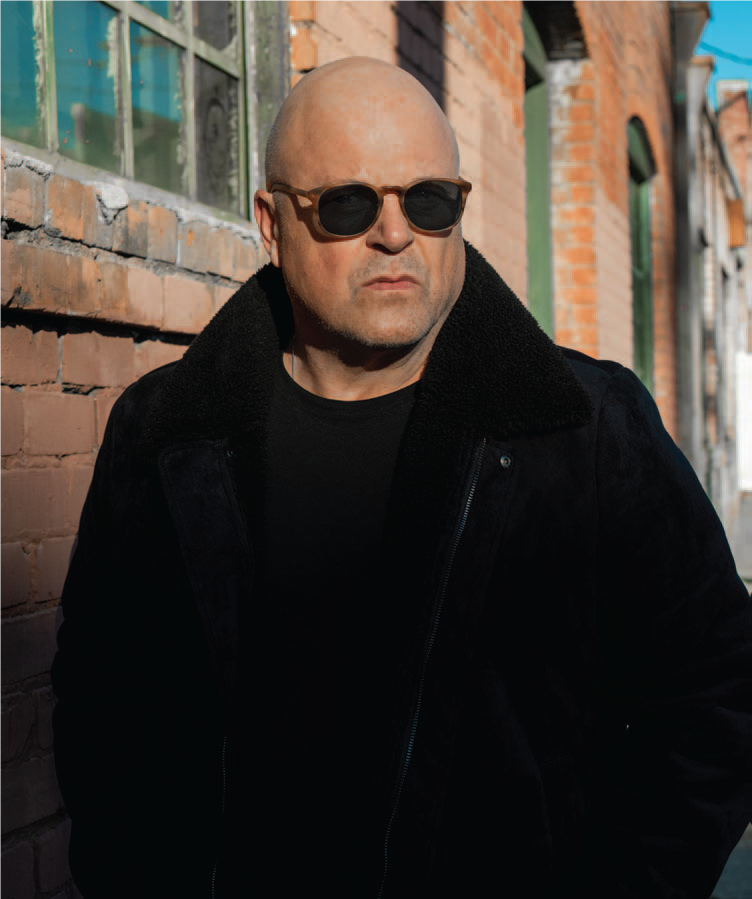
Christian Witkin Inc.
One of the profound challenges for an actor is portraying the humanity of a character in subtle and unexpected ways. Michael Chiklis can do it in his sleep. He made us root for the bad cop on the riveting and often unnerving FX series The Shield and made our hearts ache under fifty pounds of orange rock makeup in Fantastic Four. This year basketball aficionados are loving him as NBA legend Red Auerbach in HBO’s Winning Time and he just finished filming The Senior, the true story of a 50-something college football player. Gerry Strauss wanted to get a feel for how Michael manages to inhabit the myriad characters he has played. Leveraging his own life experience and passion, it turns out, is what makes them leap off the page and onto the screen.
EDGE: What is your process for playing a real person like Red Auerbach?
MC: I basically research them and get a sense of the kind of person that they were from their own words, as well as from others. And then I try to pay deferential homage to them. But I try to keep it real, obviously. To play someone like the late great Red Auerbach is a joy, especially with someone with the pedigree of [executive producer] Adam McKay. My first episode was directed by Jonah Hill and all of my scenes were with John C. Reilly [as Lakers owner Jerry Buss]. We had a great time working together.
EDGE: You grew up a Celtics fan.
MC: Yes, and I wish my dad was still around, because he was such a huge fan and he loved Red Auerbach. I don’t know how a lot of the things that Red did back then would play in today’s world. I mean, can you imagine a guy on the sidelines lighting up a stogie because he feels like the game is over? He was known for his gamesmanship—it wasn’t beneath him to turn the heat up in the guest locker room to 95 degrees and shut the windows. He wasn’t a cheater, but he would definitely push some boundaries, for sure. But I’ll tell you what, when you read books that he’s co-authored or you read books by people like Bill Russell, the way that guys speak about him, his players loved him so much. When you play for someone for years and all you have to say is how much you adore him, there’s something to that, it speaks to a person. Red knew how to manage people. He understood what people needed and treated them with respect. He didn’t just tell them, “I’m the boss, and this is the way it’s going to go.” My understanding of Red is that if you played with him, he loved you and listened to you and collaborated with you. He was very inclusive, progressive and forward-thinking, especially in the city of Boston. That’s why his name is etched in the parquet floor. I’ve had an opportunity to play some really iconic, real-life people through the course of my career, and I approach them all in the same way with tremendous respect— with no ax to grind and no agenda in terms of the way I want to portray them.
MC: I play another real-life guy who was the oldest player in the history of college football. Mike Flynt, at 59 years old, tried out for and made his old college football team. He had been thrown out of school his senior year for fighting with another player and he always regretted it. It’s a redemption tale, an underdog tale, and it’s a really wonderful story and a great script.
EDGE: Your first big role was playing John Belushi in Wired, the film version of Bob Woodward’s book. Not many people outside Hollywood know this story.

Christian Witkin Inc.
MC: It was heavy, heavy stuff for a 24-year-old. I was a well-trained, raw visceral actor. But this was my first on-camera job. Most people I know in this business, they put their toe in the water, they get their feet wet, they’re an extra on something, they get to see how things work. My very first job was playing an icon in an incredibly controversial mess of a film. I didn’t know what a “mark” was! Someone said, “Hey, Michael, Ed Feldman, an Academy Award-winning producer, and Bob Woodward, the guy who took down Nixon. On the other side of it was Mike Ovitz and Dan Aykroyd and all of the Saturday Night Live folks and the powerhouses of Hollywood. And I had no idea, I was really ignorant. I just thought, Wow, I get to play John Belushi. After Wired, I was being told that I would never work again. snuggle up on your mark.” I’m like, “What’s a mark?” I had no clue, from a technical standpoint, what I was doing. When I played Belushi, people said at the time, “Oh, you were so brave for doing that.” I wasn’t brave. I was ignorant. I didn’t know. And the honest answer is, I don’t know if I would’ve done it if I knew it was going to be so controversial—and especially if I knew that the family was against it. On one side of it was To think that [my career] was over for me before it started—that was a scary time. But I have no regrets. I’m glad that I did it because it started my life in film and television, and I learned a lot. I learned a lot about myself.
EDGE: How did that experience change your perspective?
MC: When you go through adversity of that kind early in your life, it gives you an acute appreciation of simple things—your health, the people around you and, of course, your work, how thrilling and awesome it is. I thought, I have no power, there’s nothing I can do about this. All I can do is do the best work that I can do in whatever situation I can find myself in, and hope that the work speaks, and that I can come up that way. That’s the only thing I knew. I didn’t have any recourse at the time. It certainly wasn’t like now, where the world is so full of grievance. So I just did whatever I could to keep going forward. And I’m still here, and I’m still working and doing really cool projects.
EDGE: When did you first become interested in acting?
MC: My parents tell me that when I was around five, I announced to them that I was going to be an actor and they thought, Next week you’ll be a baseball player, or a fireman, or whatever. But I was an oddly focused young person. I always knew that I was going to do it, and I never changed my mind. I had this sort of myopic view of acting. I knew that’s what I wanted to do, and I don’t know why. As a 58-year-old man, I look at that and I shake my head, and I’m like, How? Some people still struggle with what they’re going to be when they grow up and they’re in their forties. I feel very fortunate that I always had that personal awareness that I wanted to do this for my life.
EDGE: Did you have any early influences?
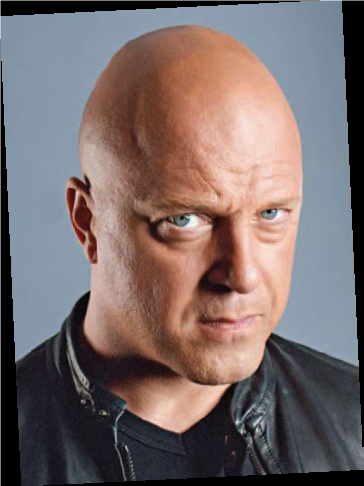
FX Networks
MC: There were a couple of things that flipped switches for me. One was a television show with Frank Gorshin and Rich Little called The Kopykats that was on when I was about five or six years old. I used to do a ton of different voices and I would do them doing other people—like Frank Gorshin doing Rodney Dangerfield. I would stand in front of my big, fat Greek family, and I would go, “Hey, I’ve seen better faces on an iodine bottle.” I’d get a big laugh and that dopamine high from it. So, that was sort of affirming. When I got older I watched movies like On the Waterfront and A Streetcar Named Desire—two films that Marlon Brando starred in. They had a profound effect on me. I remember watching those films in the dark and going, I know this is what I’m going to do. I know I have to do this.
EDGE: Who else moved your career along?
MC: This gentleman named Mark Kaufman became sort of an early theatrical mentor of mine. I had an incredible opportunity to help him open the Merrimack Repertory Theater, a regional theater in Lowell, Massachusetts, the town I was born in. I had sort of a backstage pass to watching that whole process happening, to be there every step of the way. It further affirmed to me, yeah, this is my life, this is what I want to be doing. Also, I was taught very early on that people who have longevity in their career are people who have a root or a foundation in classical training. That’s why I went to Boston University. It offered a classical conservatory setting, and I studied the craft in earnest.
EDGE: How did you envision your acting future as a young man?
MC: I thought my path would be off-Broadway, Broadway, and then to the silver screen from there. That was what I had in my head, but the best laid plans, right? At 21, I moved to Brooklyn after graduation and hit the pavement. I took jobs bartending and waiting tables, and then started doing off-Broadway and off-off-Broadway. Those were fun times, very Dickensian times— the best of times and the worst of times—because it was extremely exciting to be in Manhattan pursuing what I always wanted to pursue. But it could be frustrating and terrifying, fraught with all different kinds of problems and issues. But it was amazing too, it was exciting. I was there for three years when I finally got what I have to consider to be my big break in Wired. I mean, there’s nothing normal about the progression of my life or career as an actor. It’s very, very different.
EDGE: The role with which you’re most frequently associated is Detective Vic Mackey, the lead character on The Shield, which ran for seven seasons. Mackey and Tony Soprano and later Walter White were pioneers of the television antihero in the early 2000s. What went into making The Shield so good?
MC: A couple of things. To me, everything starts on the page. In the case of The Shield, you started with the pertinent thematic question: What are we willing to accept in post-9/11 America from law enforcement to keep us safe? There were other sub-themes, but that was the thematic question posed by the entire series. That’s why it holds up today; it’s an incredibly relevant question to this moment. Having said that, you need very, very thoughtful writers—writers who aren’t heavy-handed and just want to proselytize and beat the audience over the head with something—people who actually want to ask questions from every corner. That’s the basis for a great film or television show. Then you have to cast it correctly. When you think about it, it really is an incredible confluence of things to come together for any film and television show to be good, because it’s such a team sport, right? So many things have to go right. And literally, one thing can go wrong and derail the whole project. We did seven years on a show where I think, as a collective, we all looked at each other and knew that we were doing something special and sort of remarkable, and no one wanted to drop the ball. Everyone wanted to carry their own water, if you will. So, I just think that it’s a miracle of cooperation, it’s a little bit of luck, and it’s a lot of thoughtfulness and restraint.
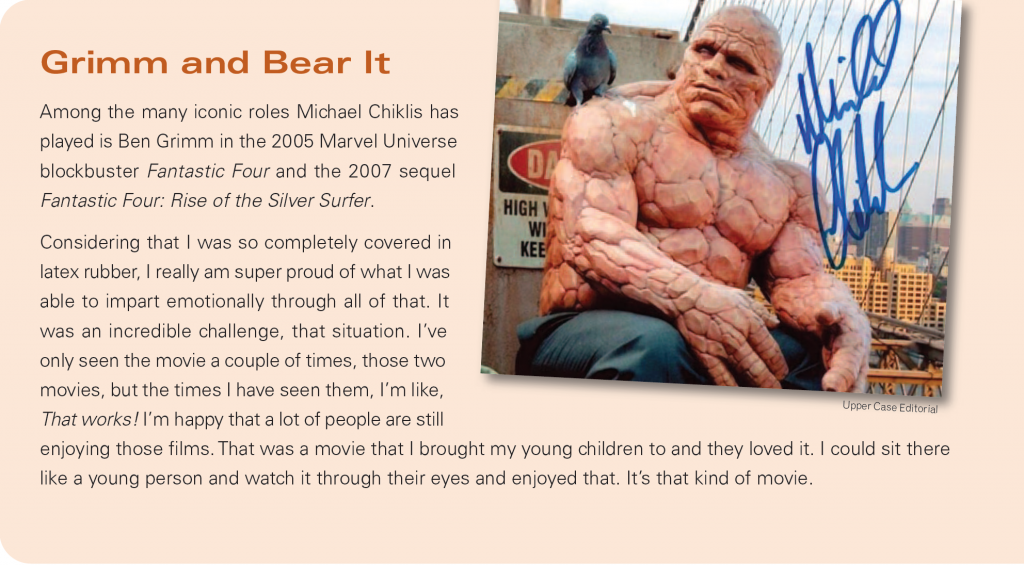 EDGE: How difficult is it to assemble a cast like the one in The Shield?
EDGE: How difficult is it to assemble a cast like the one in The Shield?
MC: Artists notoriously have egos, right? We all have our egos. But I think if your egos are healthy, you keep them in check. You know when it’s time for you to add your pinch of salt, and you know when not to be another cook in the kitchen‚ to let other people do what they do well. If you look at any great series, you’ll hear everyone involved say how collaborative people were, how exciting it was to get up in the morning and go to work every day, how the collaboration was rare and distinct in their career. We’ve all done shows that we wish weren’t on our résumés, and that’s part of it—that’s how you learn what you don’t want to do, how not to collaborate, and how things aren’t supposed to go. I’ve been very fortunate…I’ve been in a number of really, really good collaborations. I noticed that you guys did a cover interview with Jason Alexander, who I recently saw on The Marvelous Mrs. Maisel. That’s an incredible production, incredibly well made, beautifully shot, great cinematography, crisp writing, amazing acting, pacing—that’s a lot of hands, that’s a lot of people. And it’s thrilling when you see something come together that way. It’s thrilling to be a part of something like that.
EDGE: Michael, what keeps you centered at this point in your life and career? I see you’re producing and directing, recording music, getting involved in Alzheimer’s advocacy and even dabbling in martial arts.
MC: All of the above. Peaceful, joyful and centered. Variety is the spice of life, and these things keep me interested and connected to my artistry. I think I’ll never read all the books I want to read; I’m humbled at all that I don’t know—and that I’ll never be able to imbibe. I’m a bit of a seeker in that way. I want to learn as much as I can. The one thing I’m terrified of is complacency. I’ve always felt that, the moment you start to believe in your own hype and think that you’ve got it all figured out, is when the bell has tolled for you. I feel like life is short enough that you can continue learning until your last day. And that’s what I intend to do. I want to try to get better with everything that I do. I’m a drummer, right? When I’m playing drums with friends and singing, it’s pure joy. I don’t go out of my way to promote my music, but I put it out there a little bit so people can find it, but I don’t pursue it in that way. The things that are important to me are very, very simple: my family, my friends, my work, the world, people, I love to travel, I love to read, I love to listen to music of all kinds, every kind. I have the most eclectic music collection of anyone I know. I’ll listen to Rachmaninoff, and then The Tubes, you know what I mean? And everything in between. I guess this is part of my Greekness.
EDGE: How so?
MC: I grew up around a bunch of philosophers. My father is a very philosophical person. And in New England you have the winters and there’s six months at a time where we spent a tremendous amount of time inside talking and arguing and debating and philosophizing. I’m concerned for the world right now because people are increasingly afraid to speak their mind and say what their opinions are, for fear of repercussion. If not for all the debates I had with my friends and my family over the course of years, I wouldn’t have learned so much of what I know. So, I really am a big believer in conversation. I love talking to people, to my children. My oldest daughter is really coming into her own as a writer. She’s a woman of letters, and she’s very bright. My youngest is just going to—I don’t even know—I’m scared of her. She’s so incredible. They’re both incredibly bright. I know I sound like a very, very proud father—which I am—but they merit it, and I’m brutally honest. Fortunately, my oldest lives a mile down the street and my youngest, who recently graduated from college last spring, moved back in, and she’s here temporarily and working hard, and socking money away, trying to set herself up. It’s wonderful that my kids are close. The other thing is, my family loves to cook. The table is a big part of our lives. So we cook together and we sit at the table, and then it gets loud. We’re talking about this thing and that thing, and running things by each other constantly, and it’s impossible to get bored.
EDGE: As you look back at the arc of your career, what thoughts do you feel you can share with actors who are just starting out in the business?
MC: No two people have the same life path, right? So it’s impossible to give someone real advice about how to become a successful actor. There are things I can tell you that I think will help and work for you, and be there for you through the ups and downs. But no two paths are the same. I say this to people all the time that aspire to film and television careers. Actors may have crossover in their careers, but no two actors have the same trajectory. We have crossover in terms of places that we may have worked, or things that we’ve gone through along the way, but I’ve never met two actors with the same trajectory.
When producers decide to “Go Big” with a movie title, it’s not always a good idea. It sets the bar high and, should it come up even a little bit short, invites the wrath of audiences and critics. Which is why these films stand out—and stand up—as the 15 “Biggest” in Hollywood history.
